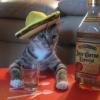Guys, we are using processing 3 ( some drawing program using java ) in university for making simple animations, and I've decided that this is the time to make my first Java game, i chose Pacman. I made my check_collision function but the problem is that the map is very complicated. I need to draw 100 rects until I make the whole map( and check collision for all of them ) so I was wondering: Is it possible to scan for a particular color, for example, can I say: If (Pacman touches blue color) { collision is ON, stop all movement }, else if ( color == black ) { movementSpeed == normal }. so that way i can just download the map from google and dont bother making a whole map with drawing all the rects myself.
[attachment=30330:pacmanMap.png]
EDIT: After 2 days of suffering, see my new shiny map ( thanks to Alberth)
[attachment=30346:map ready.png]







